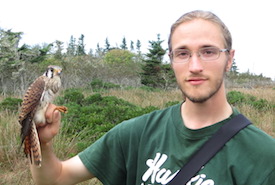So you think you can...mate? Bird edition (Part one)
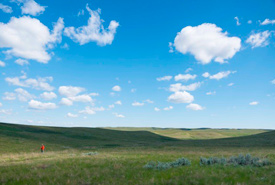
Wideview, SK (Photo by Bill Armstong)
Spring is in the air…finally! The calendar on my wall has been lying to me for a month. It's spring, you say? Tell that to my toes ― I'm sorry, but sub-zero (Fahrenheit!) temperatures, snow on the ground and second-degree frostbite feel a lot like winter to me, no matter what the calendar says! But alas, now that May is here, I can finally start to believe in springtime again, with prairie crocuses awakening from their winter dormancy and meadowlarks singing their sweet songs.
Many birders look forward to spring migration, when "our" birds can once again be seen through binoculars as they wing their way north. Geese, cranes, warblers in colourful plumage…Oh yeah, that's what dreams are made of after a long, bleak winter. And I say "our" birds with quotations because, well, let's face it ― nobody owns them. Most of the geese and shorebirds only congregate in large numbers in our southern Canadian realm for a few weeks each spring and fall, en route to and from their high Arctic breeding grounds and their more temperate (or tropical) wintering grounds, which range from the mid-southern United States to the tip of Argentina.
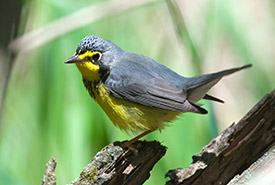
Canada warbler (Photo by Gerald Deboer)
What about neotropical migrants, like the gorgeous Canada warbler, that are actually named for their summer home? Sorry! I love these guys, but they are one of the last warblers to arrive in their Canadian boreal summer home in late May‒early June, and one of the first to depart for southern wintering grounds in early August. So, that’s two and a half months in Canada, and nearly eight months in South America, from Venezuela to Peru. Not to mention that they can also be found breeding south of our border, from Minnesota to Maine. Hmmm, "ours" indeed.
But I digress. Sure, migration can be a good time to go birding, but I'm holding out for breeding season. Oh, wait. It's already here! By April, even before the snow melts, owls are already pairing up and grouse are drumming on logs or strutting their stuff in, and on, leks (a group of displaying males or the location at which the dancing males gather). Horned larks have been singing since March, and corvids (magpies, crows, jays) are already building, or tending to, their nests. White-winged crossbills can breed at any time. Saskatchewan bird atlassers were excited to see nest building and even nestlings last year before the end of March!
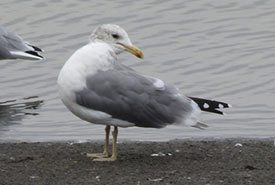
California gull (Photo by Laurie Koepke, CC BY-NC 4.0)
Some of my favourite signs of spring are the snippets of bird song carried on warm breezes, and, well, observing the mating behaviours of the birds around me. I mean, what’s more romantic than going to your local wetland or garbage dump to witness California gulls copulating or watching the birds in your yard over your morning coffee, engaging in a cloacal kiss?
Seriously though, entire chapters of books are written on avian reproductive behaviour, which involves some of the most complex and important social interactions of a bird’s life cycle. There is more to breeding birds than the flashy feathers and virtuoso singing worthy of the Met or the Palladium that some birds present. Indeed, there is more to the eye (and ear!) than these visual and vocal cues, which convey a ton of information to both potential suitors and rivals alike. The bird world has some amazing examples of courtship rituals, from ceremonial "gaping" (open mouths) in cormorants, to courtship feeding in house finches, to elaborate ground or aerial dances and displays.
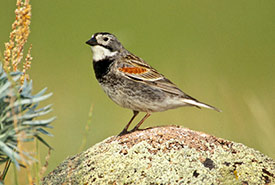
Thick-billed longspur (Photo by Alan MacKeigan)
As is custom with passionate prairie people, I have a soft spot in my heart for grassland birds. Many species are only flashy in the sense that one seldom catches more than a brief glimpse as they flash in, but mostly out, of view to hide among the grasses. However, when one does catch a momentary glimpse of these creatures of camouflage, a truly poetic prairie heart will recognize the subtle beauty presented in the array of brownish streaks and earth-tone hues of beige, ochre and dun. What these denizens of grassland may lack in showy colours, they may make up for in song or display.
Stay tuned for the part two of my blog, where I will talk about the mating displays of more grassland bird species.

